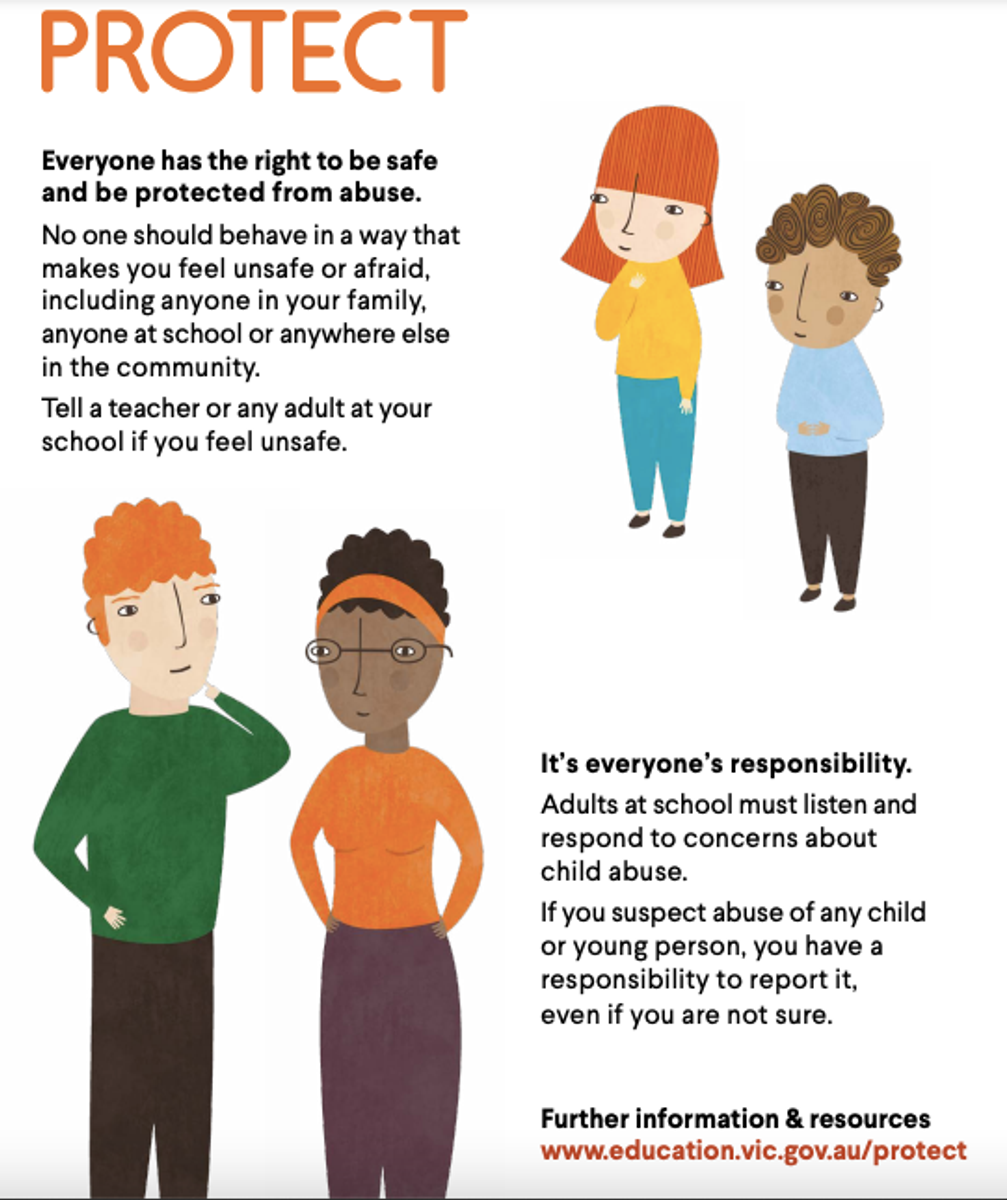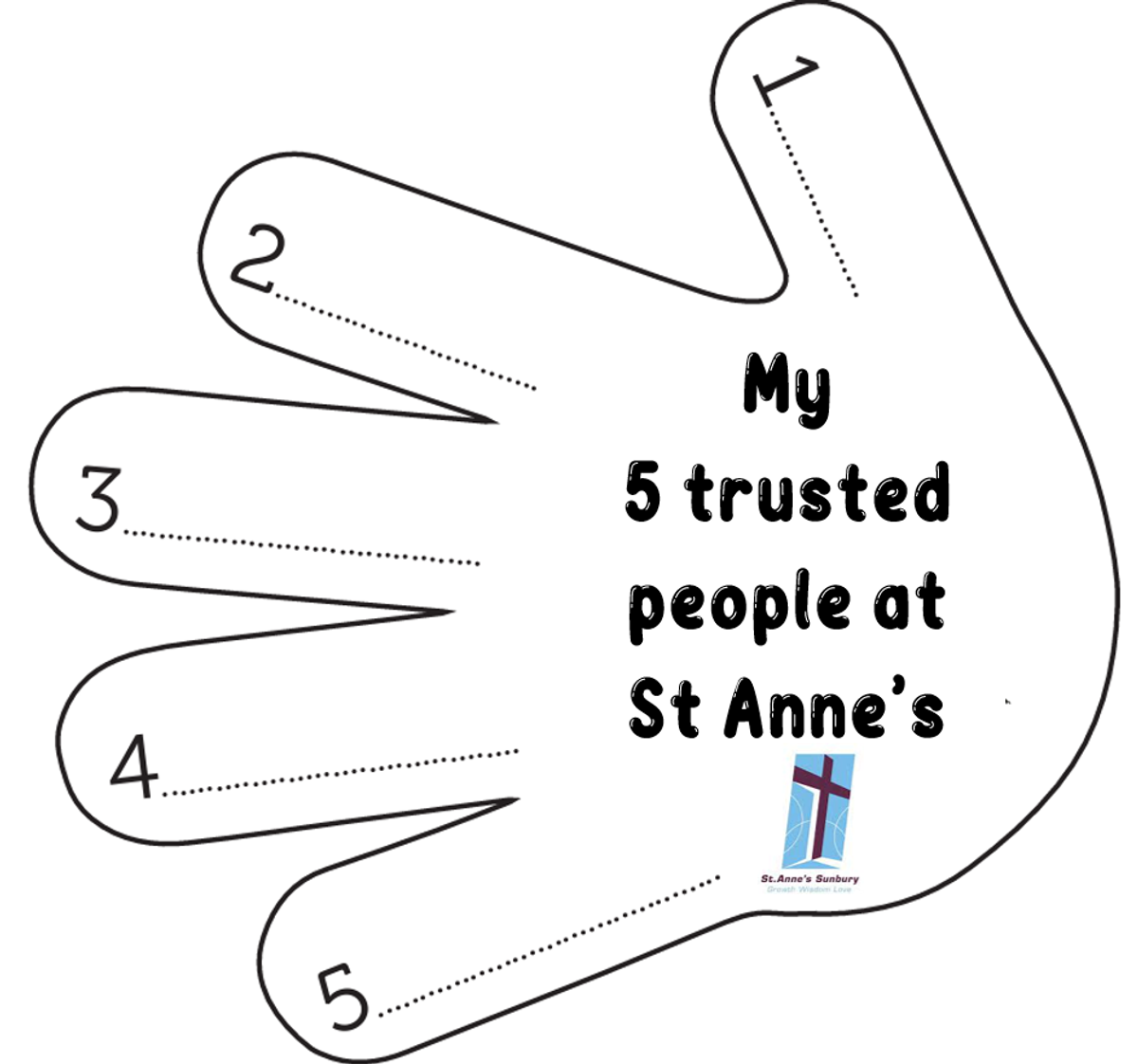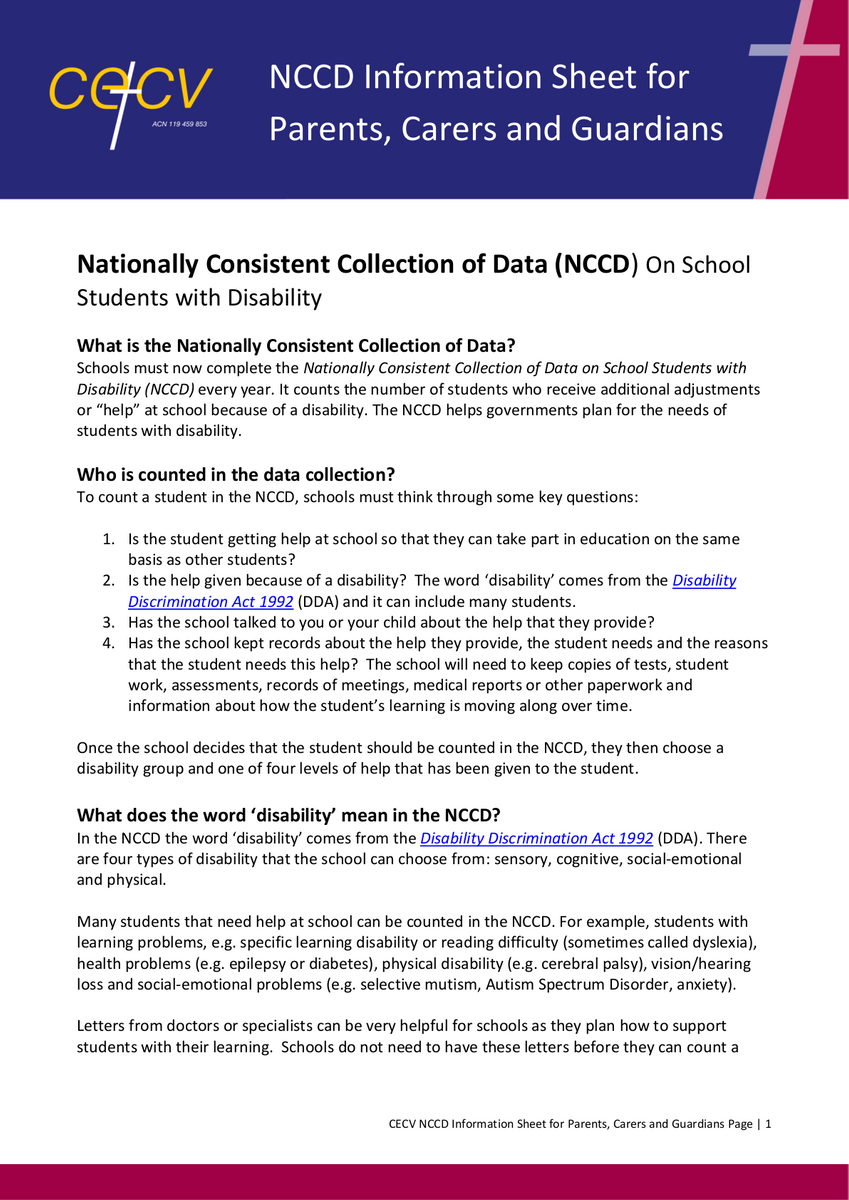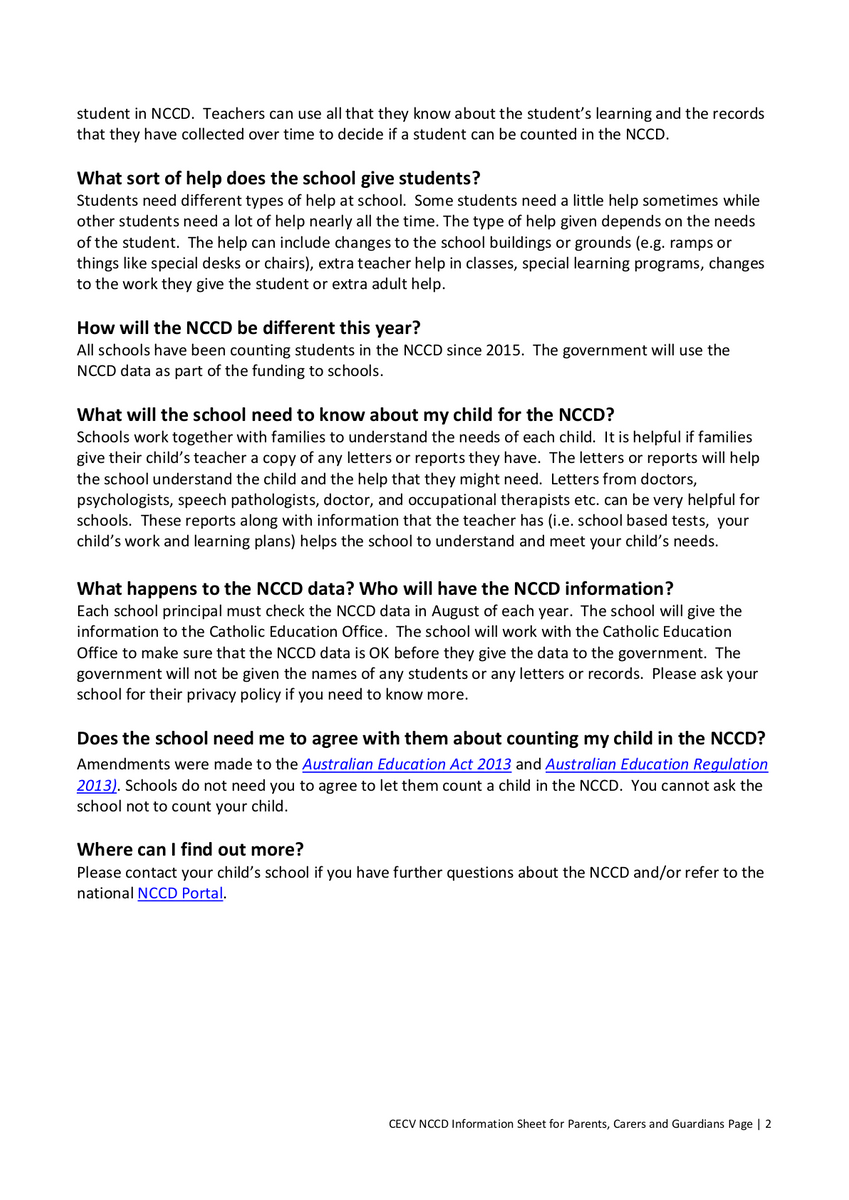Wellbeing News
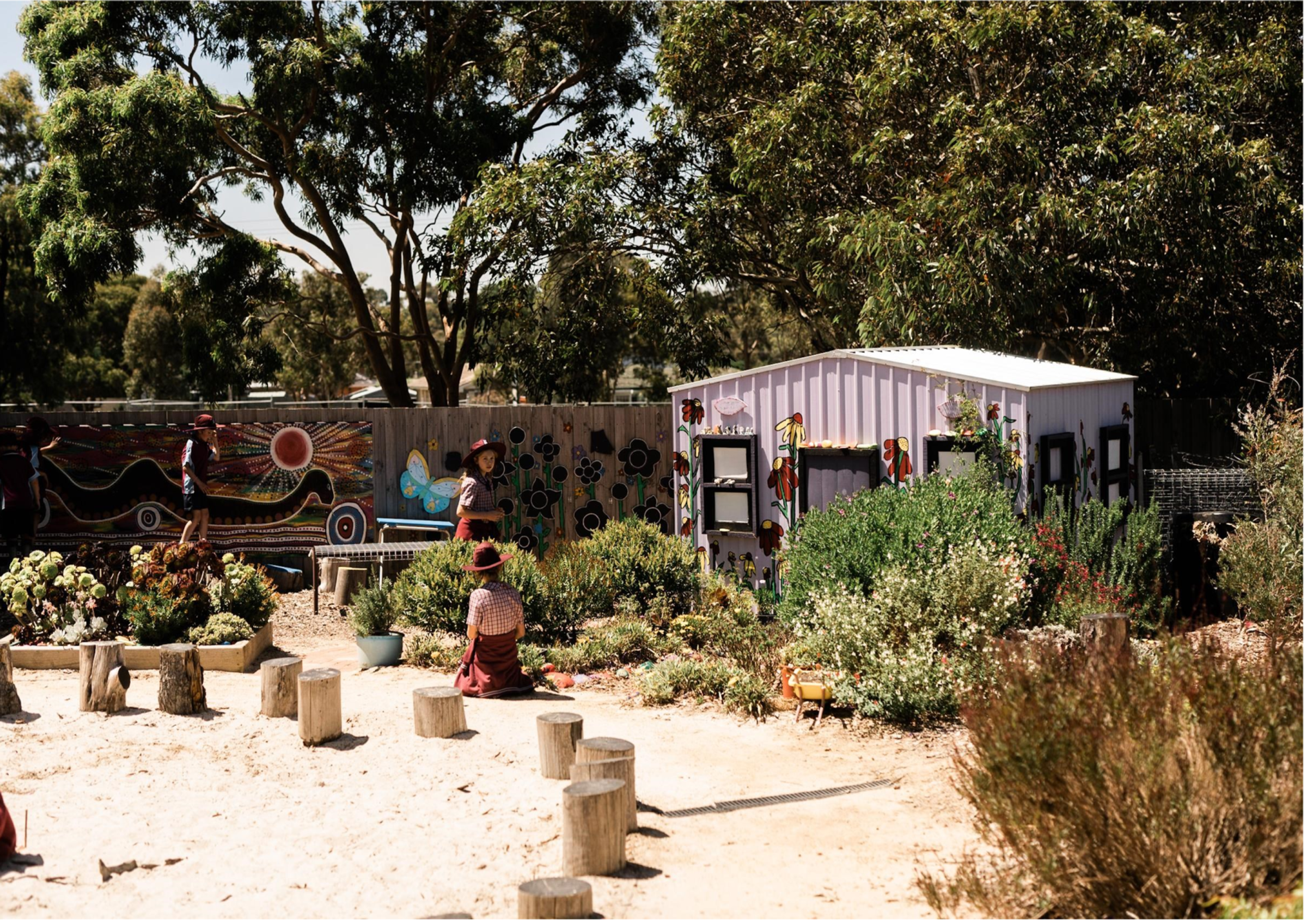
CHILD SAFETY AT ST ANNE’S
St Anne’s is a Child Safety School. As our Child Safety Policy states:
Catholic schools are entrusted with the holistic education of the child, in partnership with parents, guardians and caregivers, who are the primary educators of their children. Catholic school staff therefore have a duty of care to students to take reasonable care to avoid acts or omissions that they can reasonably foresee would be likely to result in harm or injury to the student, and to work for the positive wellbeing of the child.
Under the National Framework for Protecting Australia’s Children 2009–2020, protecting children is everyone’s responsibility – parents, communities, governments and businesses all have a role to play.
In Victoria, a joint protocol, PROTECT: Identifying and Responding to All Forms of Abuse in Victorian Schools, involving the Victorian Department of Education and Training (DET), the Catholic Education Commission of Victoria Ltd (CECV) and Independent Schools Victoria (ISV) exists to protect the safety and wellbeing of children and young people.
These posters are displayed around the school and will be used as a focus for our next SEL lesson in Week 7.
Our commitment to the protection of students is enabled in nurturing, respectful and safe communities where the uniqueness and sacred dignity of every young person are celebrated and they are able to flourish in their learning and development.
From 1 July 2022, 11 Victorian Child Safe Standards replaced the previous seven Child Safe Standards (and principles) which had been in place since 2016.
The Victorian Child Safe Standard
- 1. Culturally safe environments – Organisations establish a culturally safe environment in which the diverse and unique identities and experiences of Aboriginal children and young people are respected and valued.
- 2. Leadership, governance and culture – Child safety and wellbeing is embedded in organisational leadership, governance and culture.
- 3. Child and student empowerment – Children and young people are empowered about their rights, participate in decisions affecting them and are taken seriously.
- 4. Family engagement – Families and communities are informed, and involved in promoting child safety and wellbeing.
- 5. Diversity and equity – Equity is upheld and diverse needs respected in policy and practice.
- 6. Suitable staff and volunteers – People working with children and young people are suitable and supported to reflect child safety and wellbeing values in practice.
- 7. Complaints processes – Processes for complaints and concerns are child focused.
- 8. Child safety knowledge, skills and awareness – Staff and volunteers are equipped with the knowledge, skills and awareness to keep children and young people safe through ongoing education and training.
- 9. Child safety in physical and online environments – Physical and online environments promote safety and wellbeing while minimising the opportunity for children and young people to be harmed.
- 10. Review of child safety practices – Implementation of the Child Safe Standards is regularly reviewed and improved.
- 11. Implementation of child safety practices – Policies and procedures document how the organisation is safe for children and young people.
THE IMPORTANCE OF PERSONAL SAFETY
One of the most important things we can do as parents and caregivers is protect our children by educating them about personal safety. Teaching children simple strategies about keeping safe can help them build confidence, resilience and empower them to be safe in a variety of situations
Research shows that teaching children about personal safety:
- Reduces the likelihood of a child entering into an unsafe situation.
- Clearly demonstrates how to respond to an unsafe situation.
- Increases a child’s sense of confidence and in doing so increases their resiliency.
- Increases a child’s knowledge of their personal rights i.e. “I have the right to feel safe with people”.
- Increases the likelihood that the child will speak out if they feel unsafe and tell someone they trust.
- Can interrupt or prevent grooming.
THE 3 RULES OF PERSONAL SAFETY
- We all have the right to feel safe with people.
This rule teaches children and young people that they have the right to feel safe and secure where they live, play, and learn, and that no one has the right to make them do something that makes them feel unsafe or unsure.
- It’s OK to say ‘NO’ if you feel unsafe or unsure.
This rule teaches children and young people that it is OK to stand up for themselves and to be assertive if something doesn’t feel right.
- Nothing is so yucky that you can’t tell someone about it.
One of the reasons that children and young people fail to disclose harm is because they are afraid of getting into trouble. This rule helps to encourage them to speak to a trusted adult, even if something seems scary or terrible.
In our SEL session in Week 7, children will be asked to think about 5 trusted people at St Anne’s.
P2P
Parent 2 Parent (P2P) is a support group for parents of St Anne’s who have a child at school with a diagnosis. This is a wonderful opportunity for parents to meet each other, share stories and seek advice. Upcoming event for Term 2 include Morning Cuppa with Janette Trento,our school psychologist and Bridget, our school counselor on Thursday 1st June at 9:15am in the staffroom.
Parent Teacher Interviews and Parent Support Group Meetings (PSG’s)
Thank you to the parents who have attended PSG meetings over the last couple of weeks. Students who are included in our NCCD, have a diagnosis and/or have adjustments made in the classroom have regular meetings with The Wellbeing Team and teachers. This term Parent Teacher Interviews will be held in Week 9. Some students who have previously had PSG’s termly will have them on a semester basis in 2023. Either Jade, Sue or Kristie may be present at the parent teacher interview and will document the consultation and discussion. If your child requires a PSG, Jade, Sue or Kristie will be in contact with parents. Your child’s teacher and The Wellbeing Team are always available to be contacted if you have any concerns academically or in regards to the wellbeing of your child.
NATIONAL CONSISTENT COLLECTION OF DATA - NCCD
As mandated by the MACS, we will begin our review of NCCD. It counts the number of students who receive additional adjustments or “help” at school because of a disability. The NCCD helps governments plan for the needs of students with disability.
Many students that need help at school can be counted in the NCCD. For example, students with learning problems, e.g. specific learning disability or reading difficulty (sometimes called dyslexia), health problems (e.g. epilepsy or diabetes), physical disability (e.g. cerebral palsy), vision/hearing loss and social-emotional problems (e.g. selective mutism, Autism Spectrum Disorder, anxiety).
More information is attached to this newsletter.
The Wellbeing Team
Kristie Browning Sue Sexton
kbrowning@sasunbury.catholic.edu.au sues@sasunbury.catholic.edu.au
Jade Salpietro
jsalpietro@sasunbury.catholic.edu.au

